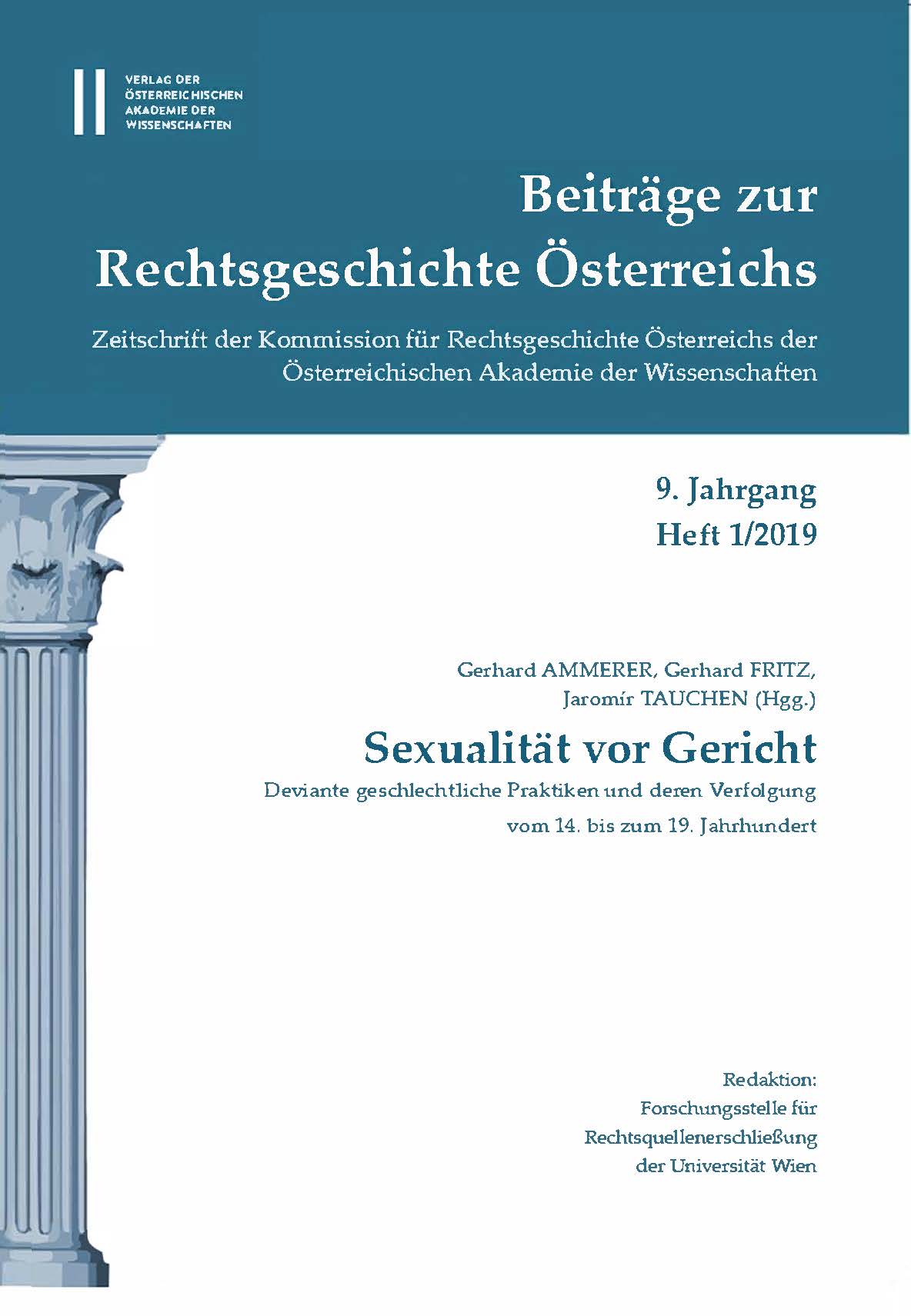
Beiträge zur Rechtsgeschichte Österreichs 9. Jahrgang Heft 1/2019, pp. 207-226, 2019/05/21
Sexualität vor Gericht
Deviante geschlechtliche Praktiken und deren Verfolgung vom 14. bis zum 19. Jahrhundert

Infanticide was the most common violent crime committed by women in the early modern period. Until the 18th century the judicial authorities showed only limited interest in the motivations behind this crime. It can be assumed that usually there existed a whole range of factors, which could be relevant in different intensity depending on the individual case. In the early days the fear of punishment played an important role; in the worst case the women were threatened with criminal sanctions and ecclesiastical penalties. In the scholarly and public discourse during the age of enlightenment, the feelings of dishonour and shame were seen as the main reasons for this crime. Finally, economical motives were increasingly considered to be important for committing an infanticide. All these various motives became particularly clear when an accused woman already had born a child out of wedlock.
Keywords: criminal history – early modern period – infanticide – women’s history